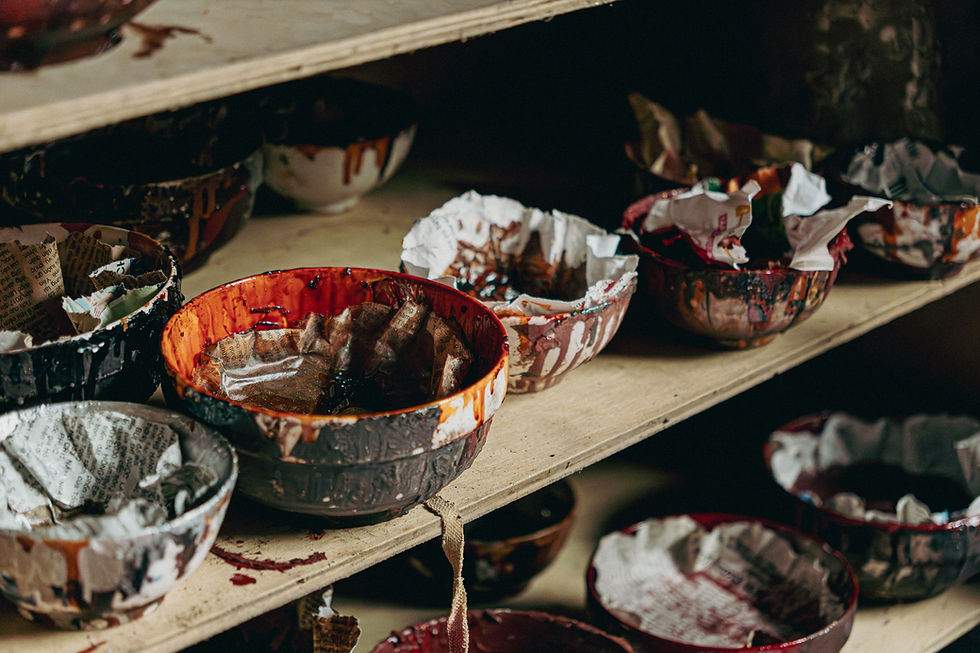My childhood is deeply intertwined with the lacquer trade. From the age of four or five, I inhaled the scent of lacquer far more often than that of candy or flowers. The smell, which many consider toxic, was something I loved to breathe in as a child. “Lacquer burns each skin differently, just as demons choose their prey.” Thankfully, despite my mischievousness, I was never harmed. Both sides of my family have a long history in lacquer work: my maternal side focused on religious items, while my paternal side specialized in fine crafts. Through decades of hardship and comfort, that legacy remained. I still remember the deep, bloody cracks on my father's hands each winter, when the lacquer was infused with gasoline and oils. I can picture him emerging from the painting room at four in the morning, covered in paints. My love for lacquer was like a seed planted during those formative years.
Due to various challenges, lacquer has never been a profession to me. As I grew up in journalism, absorbing diverse lessons and immersing myself in Vietnamese culture, I occasionally found myself reminiscing about lacquer. Rarely do culture and art blend so seamlessly. With each passing year, my passion for Vietnamese tradition continued to flourish.
When I started a family and embraced motherhood, setting aside my wanderlust, I had the good fortune to explore Buddhism, particularly the Vajrayana tradition. My love for culture blossomed into a fascination with the treasures of Buddhist art, compelling me to delve into the symbolic meanings and human values they convey. Like morning dew transforming into drifting clouds, waiting for the right moment to coalesce into nourishing rain, my heart urged me to return to the early seed. I wanted to nurture it with love for culture and the wisdom of Buddhism, so that one day it could bloom and enrich the world.
I named that seed SonMani.



Jewels Hidden Beneath the Lacquer
In Buddhism, mani refers to the wish-fulfilling jewel that fulfills the desires of all beings. This symbol also represents the Buddha-nature within each sentient being — a precious gem that exists within us, yet is often obscured by negative thoughts and habits.
Within each lacquer piece, hidden beneath the traditional layers of vermilion, are the materials and intentions of the skilled artisan waiting to shine through. Our own Buddha-nature is similar; we refine ourselves to brush away the accumulated dust of our exterior until the inner jewel radiates with the brilliance of compassion and wisdom.
From this meaning, I chose the name SonMani to imbue each traditional handcrafted product with the human values of Buddhism. The essence of Vietnamese culture, the wisdom of Buddhism, and my passion for lacquer come together in this long-term project. I hope that when people admire these works, they will remember and seek to rediscover the jewel within themselves.

The Mani Story
by Quynh Do